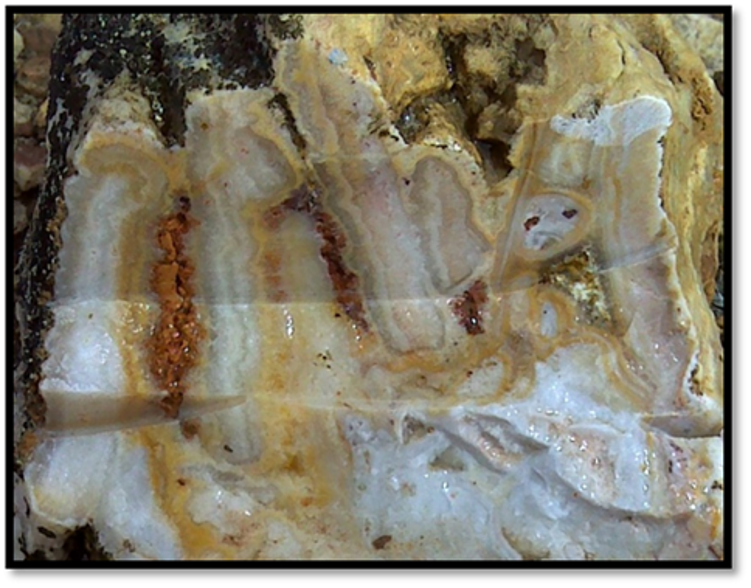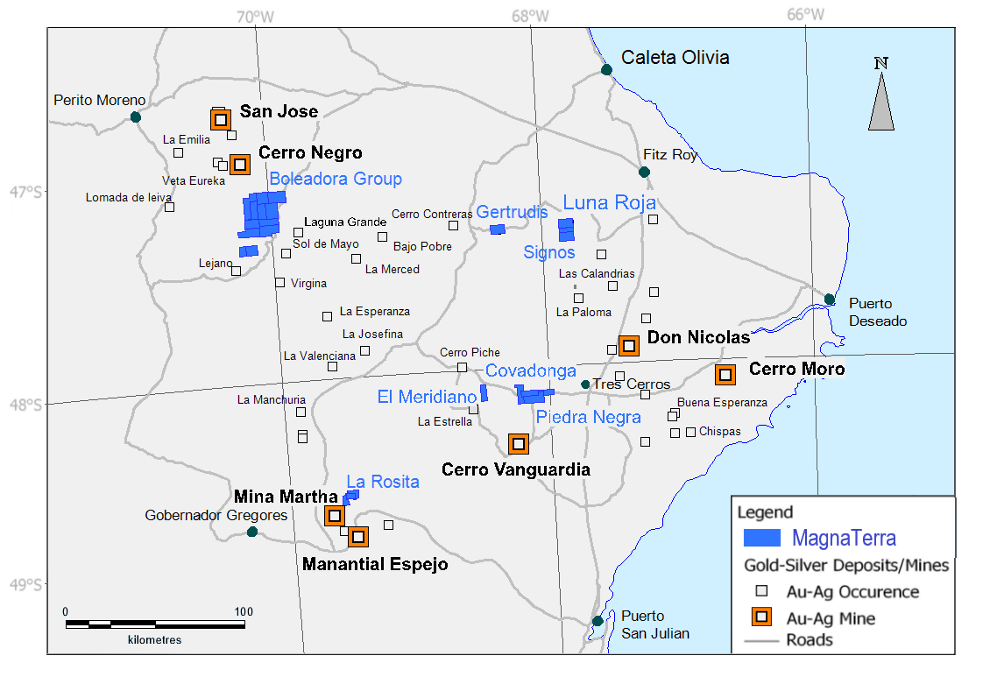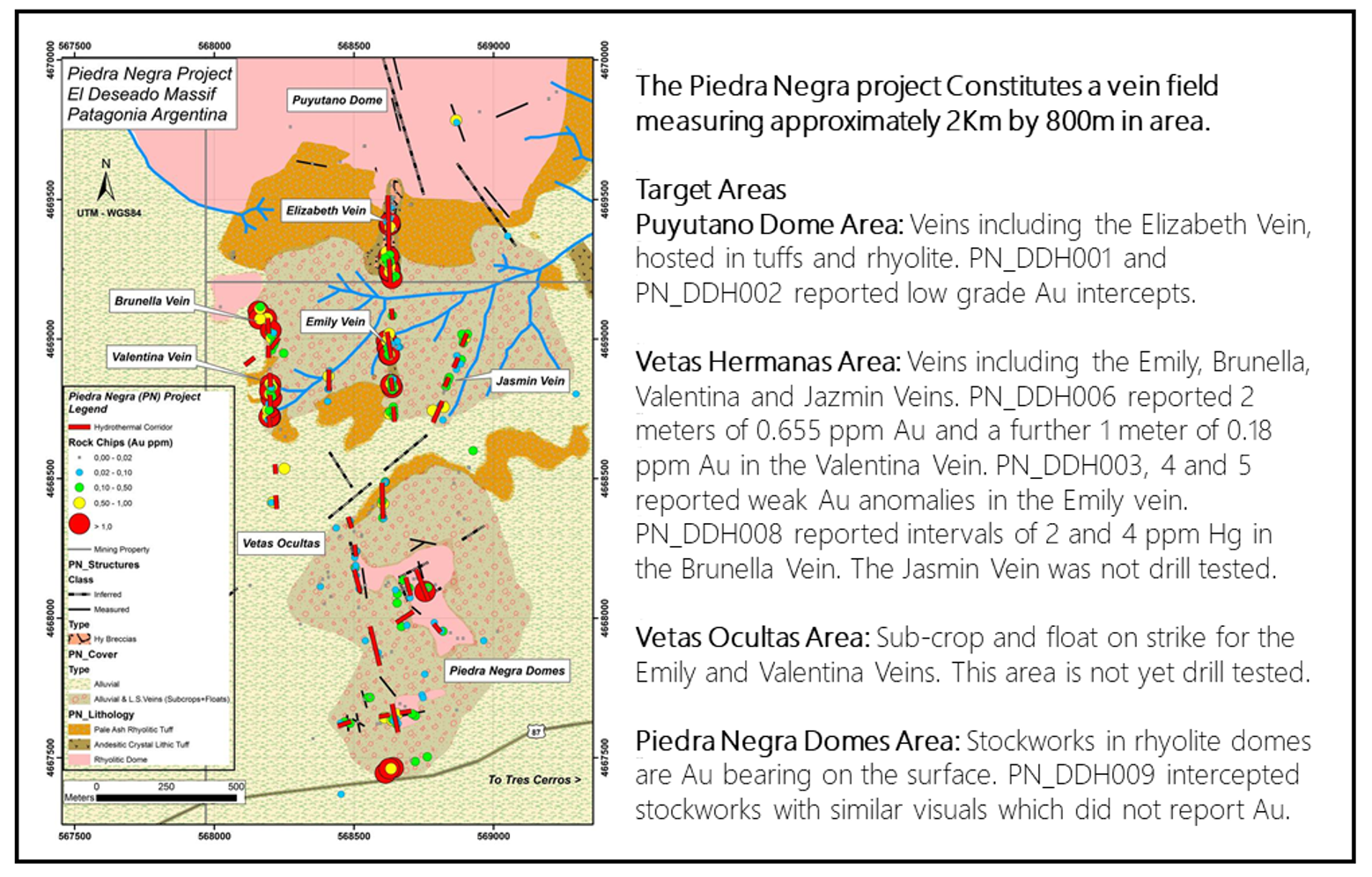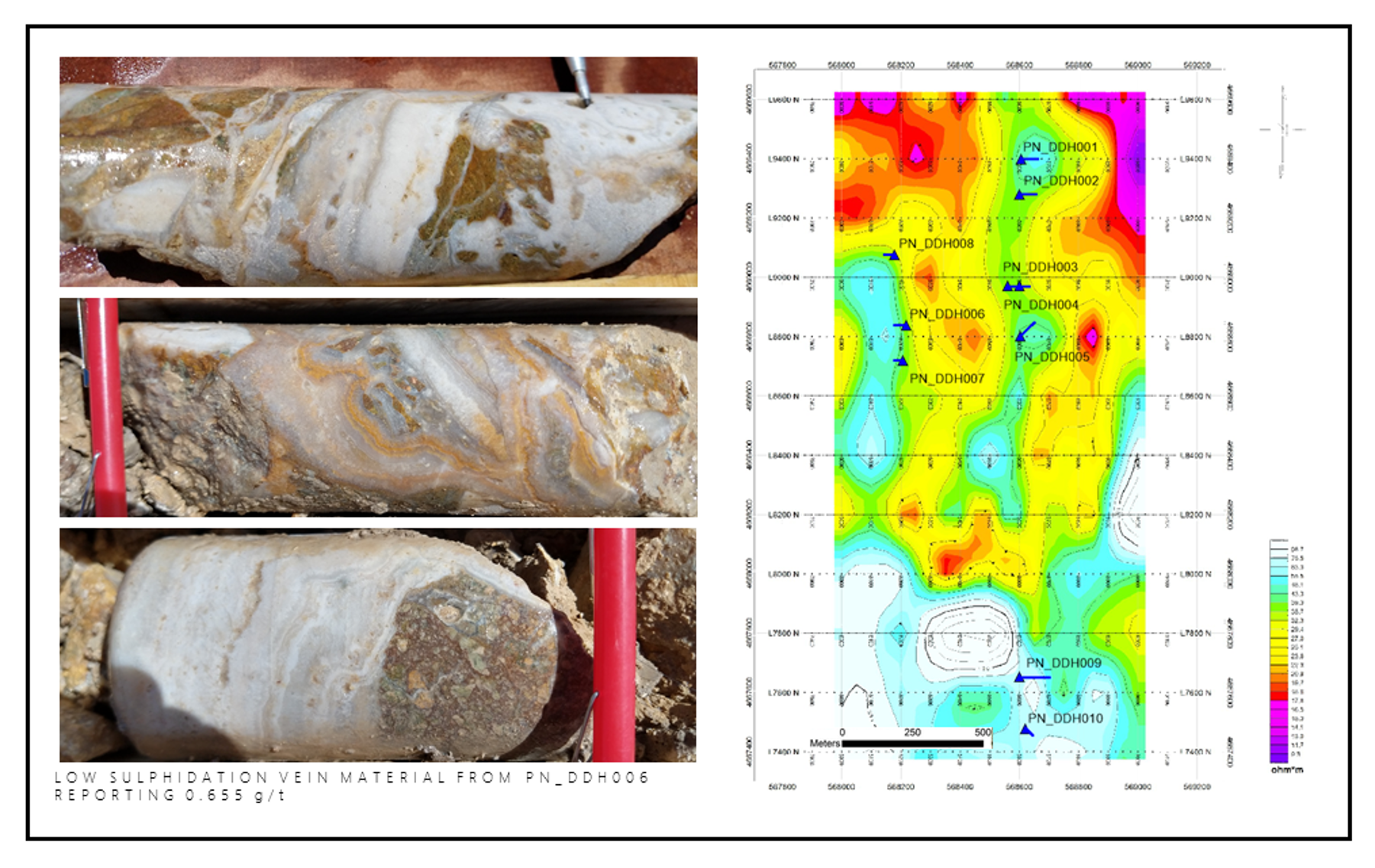+1.647.478.5307
Piedra Negra

Primary Target
Gold in Low Sulphidation Veins and Stockworks
Partner
Available for Joint Venture
Location
The Piedra Negra Project is located approximately 40 Km North of Cerro Vanguardia gold mine in the centre of the Deseado Massif of Santa Cruz Province. It is accessed in around 30 minutes from the Tres Cerros Hotel on 25 Km of good unpaved road which crosses the project (Figure 1).

Figure 1, Deseado Massif, Magnaterra Minerals Property Map.
Project Operator
Magna Terra Minerals Inc.
Property Information
Magna Terra Minerals Inc. has 100% control, through a leasing agreement with a private individual, of the Piedra Negra II M.D and Puyutano Cateo which constitute 8,000 Hectares, with the project occupying an area on the border of the two properties. Magna Terra Minerals Inc. also controls the Covadonga and Piedra Negra I M.D.s which are adjacent to this project.
Geology
The Piedra Negra project is characterized by Au bearing, low sulphidation veins and stockworks, hosted in andesitic flows and rhyolitic domes of the Bajo Pobre and Chon Aike Formations respectively. The area of interest is divided for convenience into 4 zones which, from North to South, are the “Domos de Puyutano”, “Vetas Hermanas”, “Vetas Ocultas” and “Domos de Piedra Negra”. The vein and stockwork field varies in width from 250 m to 700 m and has a strike length of 2.4 Km from north to south (Figure 2).

Figure 2, Piedra Negra geology map with and Au Rock Chips.
The four mineralized zones vary significantly in character in terms of geology. The Vetas Hermanas zone includes the site of the initial discovery and is characterized 900 meters of low sulphidation, banded, crustiform and cockade texture veins which are hosted largely in andesite flows. The veins in this zone vary in strike between 350° to 20° and are intermittent, with sampling being based on interpolation of outcrops into areas of sub crop and float. The Domos de Piedra Negra Zone is represented by an East – West extension of 280 meters of anomalous Au in veins and stockworks hosted in Rhyolitic dome material. Whilst the extension of mineralization is generally E-W and N-S in this zone, individual veins strike WNW, which is more typical of the orientation of mineralization in other parts of the massif. Of the 77 surface samples reported in this zone the average Au grade is 0.179 ppm and this is accompanied by averages of 84 ppm Pb, 13 ppm As and 225 ppb Hg with the Hg being calculated from the 38 surface samples where cool vapor analysis was available.
First pass drilling, comprising 860 meters of diamond drilling in 9 short holes, was completed in December 2018 with results received in February 2019. Collar locations are illustrated in Figure 3, over an induced polarization resistivity map at 90m depth. In this first pass campaign, we partially tested the Elizabeth vein at the southern edge of the Puyatono Dome Area. We also tested the Vetas Hermanas Area and the Domos de Piedra Negra down to around 100 meters. The Vetas Ocultas Area remains un-tested.
Drill hole
PN_DDH006 intersected 2.0 m of 0.655 g/t Au (from Meter 14 to 16) and then 1.0 m of 0.18 g/t Au (from Meter 26 to 27). The hole collared in argillized tuffs, and after 14 meters, cut low sulphidation vein material. Further anomalous intercepts are reported in Holes PN_DDH001, 2, 4 and 7 and occur over an area of 700 by 500 meters in the Vetas Hermanas and Puyutano Dome areas.
Chalcedonic silica in Au bearing intercepts along with a pervasive Illite Sericite alteration, combine to indicate that the drilling was restricted to the upper part of a low sulphidation epithermal system, implying further target potential at depth. Additionally, strong Hg anomalies, between 2 and 4 ppm in PN_DDH008 appear to form part of a regional pattern which relates the Piedra Negra Veins to the discovery vein at Covadonga, 9 Km to the West.

Figure 3, Induced Polarisation Resistivity at 90m depth with drill collar locations. RQ drill core from shallow intercepts in hole PN_DDH_006.
Head Office
20 Adelaide St. East, Suite 401
Toronto, ON M2C 2T6
Canada
Contact Us


info@magnaterraminerals.com
© 2024 Magna Terra Minerals All Rights Reserved.
